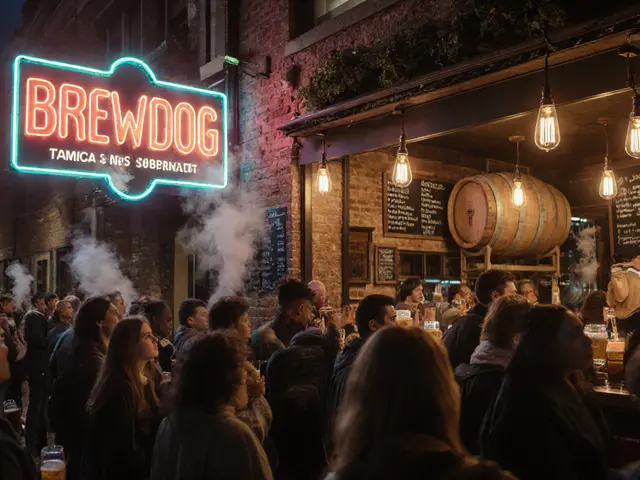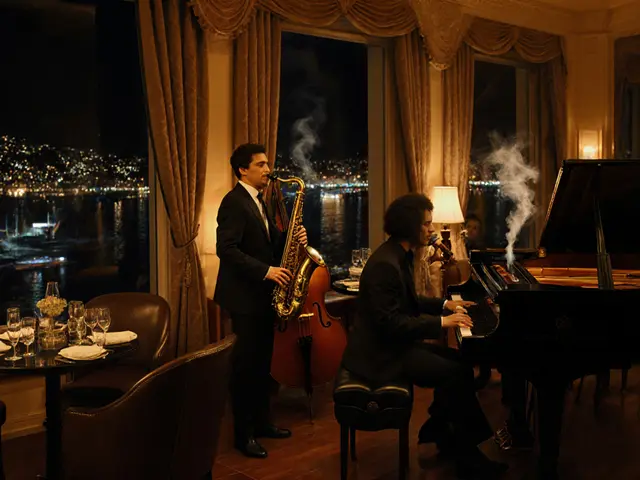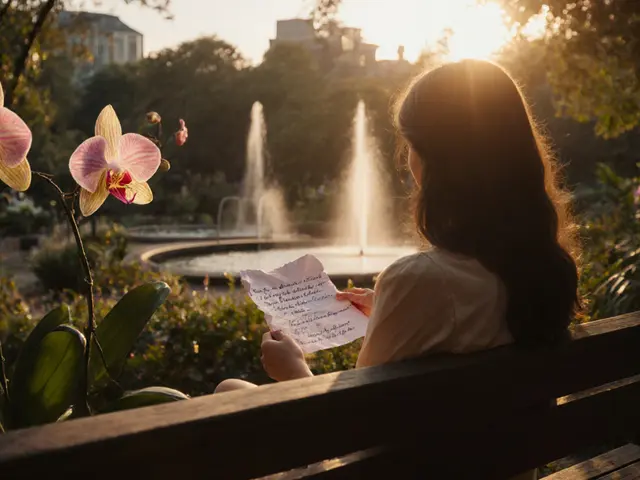Discover the Hidden Gems of Paris with a Local Guide Who Knows the City Inside Out

Most tourists in Paris stick to the same five spots: the Eiffel Tower, the Louvre, Notre-Dame, Montmartre, and Champs-Élysées. But if you’ve been before-or even if you haven’t-you’re missing the real Paris. The quiet courtyards where artists still sketch. The tiny bakeries that have been making croissants the same way since 1932. The bookshops tucked behind alleyways that don’t show up on Google Maps. You won’t find these places in guidebooks. You won’t find them unless someone who lives here takes you there.
Why a Local Guide Changes Everything
A good tour guide tells you what to see. A great one shows you what to feel. Paris isn’t just a city of landmarks. It’s a city of rhythms. The way the morning light hits the Seine at 7:15 a.m. The sound of a street violinist playing Piaf near Pont Alexandre III. The smell of fresh baguettes drifting from a boulangerie that doesn’t even have a sign. These moments don’t appear in brochures. They’re passed down like family recipes.Most visitors hire a guide for logistics. But the real value comes from someone who knows where to go when the crowds thin out. Someone who remembers the boulangerie on Rue des Martyrs that uses organic flour and only opens at 6 a.m. Someone who knows which bridge has the best view of the city at sunset-without the selfie sticks.
This isn’t about luxury. It’s about access. A local guide can walk you into a 17th-century courtyard where only residents and their guests are allowed. They can get you a table at a Michelin-starred bistro that doesn’t take reservations from tourists. They can point you to the hidden garden behind the Musée d’Orsay where the roses bloom in May and no one else knows about it.
Where Most Tourists Miss the Magic
Let’s start with the Left Bank. Everyone knows Saint-Germain-des-Prés. But few know about the tiny alley behind Café de Flore that leads to a 200-year-old print shop still using hand-operated presses. The owner, a retired art professor, will show you how they make limited-edition posters using woodblocks. No tour group ever finds it. You need someone to knock on the back door.Then there’s the 15th arrondissement. Most tourists think it’s just residential. But tucked between apartment buildings are three cafés that serve the best pain au chocolat in the city. One of them, La Pâtisserie des Rêves, doesn’t even have a menu. You just tell the baker what you’re in the mood for, and they hand you something perfect.
And what about the Canal Saint-Martin? Tourists walk along the top. Locals sit on the stone steps, feet dangling over the water, eating cheese and fruit from the market on Rue de Crimée. The best spot? The bench under the weeping willow, just past the third bridge. You’ll see couples reading, artists sketching, and old men playing chess. No one takes photos here. It’s too quiet for that.
Secrets Only Locals Know
There’s a bookstore in the 6th arrondissement called Shakespeare and Company. Everyone knows it. But few know about the hidden staircase behind the fiction section. It leads to a tiny room where authors used to sleep in exchange for helping out. Today, it’s still used by visiting writers. If you’re lucky, the owner will let you sit there for 10 minutes. No one else can book it.Then there’s the wine bar under the Gare de Lyon. No sign. Just a red door. Inside, you’ll find 80-year-old vintages from family vineyards in Burgundy. The owner pours you a glass and tells you the story of the grape. He doesn’t charge by the bottle. He charges by the memory.
And the catacombs? Yes, they’re famous. But the real underground experience is the abandoned Métro station at Porte Molitor. Closed since 1939, it’s now used by photographers and filmmakers. You can’t get in alone. But a guide with the right connections can take you through the tunnels where the walls still bear graffiti from the 1940s.

What Makes a Guide Worth It
Not all guides are the same. Some just memorize facts. Others memorize names and dates. The best ones memorize stories. They know which café the poet Apollinaire wrote in. They know which street corner was the meeting spot for Resistance fighters in 1944. They know which bakery made the bread for the French president’s breakfast last week.A good guide doesn’t just show you places. They show you time. They’ll take you to a market that’s been running since 1870. They’ll introduce you to a cheese maker who still uses the same mold his grandfather did. They’ll let you taste a wine that hasn’t been sold commercially since 1982.
This isn’t a luxury. It’s a correction. Most travel experiences are curated for mass appeal. What you get is a version of Paris designed for Instagram. What you need is a version designed for memory.
How to Find the Right Guide
You won’t find the right guide on TripAdvisor. You won’t find them on Airbnb Experiences. The best ones are recommended by word of mouth. Ask someone who’s lived in Paris for more than five years. Ask a hotel concierge who’s been there 20 years. Ask a local artist. They’ll give you a name-no website, no reviews, just a person.When you meet them, pay attention to how they talk. Do they say “you should see” or “I used to go”? The latter is the one you want. The best guides don’t sell tours. They share their city.
Expect to pay between €150 and €300 for a full day. That’s not expensive. That’s the cost of a real experience. A hotel room costs more. A flight costs more. But you won’t remember the room or the flight. You’ll remember the quiet corner where you ate a pastry with someone who knew the history of every brick around you.

What to Ask Before You Go
Don’t just book a guide. Interview them. Ask:- What’s the one place you take your friends when they visit?
- What’s something you love about Paris that no one talks about?
- Can we go somewhere that doesn’t have a sign?
- What time of day do you think Paris feels most alive?
If they hesitate, keep looking. The right person won’t need to think. They’ll answer like they’re remembering a favorite song.
What to Bring
You don’t need much. Comfortable shoes. A light jacket. A notebook. And an open mind. Leave your phone in your pocket for at least an hour. Let yourself get lost-not in a scary way, but in the way that lets you notice things you didn’t know you were missing.Paris doesn’t need to be seen. It needs to be felt. And the only way to feel it is to walk it with someone who knows its heartbeat.
Is it safe to hire a private guide in Paris?
Yes, hiring a local guide is safe and common. Look for someone recommended by a trusted source-like a hotel, a local artist, or a long-term resident. Avoid services that promise "escort" in a romantic or sexual context. The guides who know Paris’s hidden corners are professionals who value their reputation. They’re there to share culture, not provide companionship. Always confirm the purpose of the tour upfront.
How long should a private Paris tour last?
A full day (6-8 hours) is ideal. Paris reveals itself slowly. Morning light on the Seine, midday pastries in a quiet market, afternoon wine in a hidden cellar, golden hour on a forgotten bridge. Rushing through five sites in four hours misses the point. The best experiences happen when you linger-when you sit, listen, and let the city breathe around you.
Can I do this on my own without a guide?
You can visit the famous spots alone. But the hidden places? The ones with no signs, no websites, no reviews? Those are nearly impossible to find without a local connection. Even with Google Maps, you’ll miss the stories behind the doors. A guide doesn’t just show you where to go-they show you why it matters.
Are these guides expensive?
Compared to a luxury hotel or a Michelin dinner, they’re reasonably priced. A full-day private tour costs €150-€300. That’s less than half the price of a single night in a mid-range Paris hotel. But unlike a hotel room, this experience stays with you. You’re not buying a service-you’re buying a memory shaped by someone who knows the city’s soul.
What’s the difference between a guide and an escort?
A guide shares knowledge. An escort provides companionship. In Paris, the best experiences come from people who know the city’s history, culture, and hidden corners-not from people hired for personal company. If a service uses the word "escort" in a romantic or intimate context, it’s not a tour. It’s something else entirely. Stick to professionals who identify as local historians, cultural guides, or private tour operators.
If you’re ready to see Paris beyond the postcards, don’t book a tour. Find a person. Someone who remembers where the light falls at 4 p.m. on a Tuesday in October. Someone who still knows the name of the baker who died in 2012 but whose croissants are still made the same way. That’s the Paris no one else can show you.







